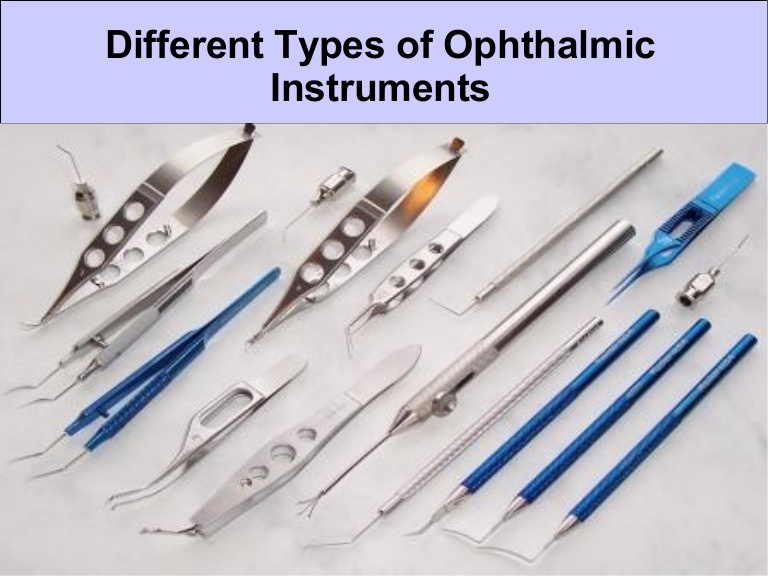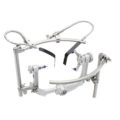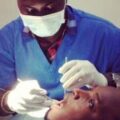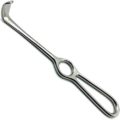An ophthalmologist is a medical or osteopathic doctor who specializes in eye and vision care. They are licensed to practice medicine and surgery. This advanced training allows ophthalmologists to diagnose and treat a wider range of conditions than optometrists and opticians. Typical training includes a four-year college degree followed by at least eight years of additional medical training.
An ophthalmologist diagnoses and treats all eye diseases, performs eye surgery and prescribes and fits eyeglasses and contact lenses to correct vision problems. Many ophthalmologists are also involved in scientific research on the causes and cures for eye diseases and vision disorders. Because they are medical doctors, ophthalmologists can sometimes recognize other health problems that aren’t directly related to the eye, and refer those patients to the right medical doctors for treatment.
Eye care professionals must use many pieces of equipment to diagnose and treat patients. Some of the most common pieces of ophthalmology equipment include ophthalmic light bulbs, and chairs of various types. Diagnostic ophthalmology instruments are used to examine and diagnose patients. Ophthalmology equipment also will include various types of lenses.
To provide a thorough and precise examination and diagnosis, an ophthalmologist may use an ophthalmoscope to view the patient’s eye. This tool generally is made with lenses of varying sizes. The binocular ophthalmoscope will typically have a padded headband for comfort and easy fit. It provides binocular magnification to view interpupillary distance. This instrument generally is protected by a sealed optic vision system to shield it from dust, making it easy to maintain and store.
Another type of ophthalmology equipment used for diagnostic purposes is known as a streak retinoscope. This equipment is used to see the reflection of a patient’s retina, by shining light into the eye. Most are built to be used by one hand operation.
An ocular transilluminator transmits fiber optic light for quality examinations. These typically use halogen lamp bulbs to provide greater light. This ophthalmology equipment will be used to examine the reflex of a patient’s pupils.
Various other pieces of ophthalmology equipment may include tonometers and kerotometers. These eye tracking devices take high-speed measurements. Many feature adjustable monitors as well. Other miscellaneous pieces of equipment are projector floor stands and mirror sets. Visual field perimeters are also necessary in an eye doctor’s office.
Types Of Ophthalmology Instruments and Their Uses
Toric MarkerToric Marker: is used to mark 0 to 180 degree reference mark for Toric IOL implant
Pre-chopper: is used to chop lens into pieces before implantation new lens and reduce phaco time
Spectacles (glasses): is used to correct refractive errors of the eye; not invasive
Contact lenses: is used to correct refractive errors of the eye; a little invasive
Phoropter: is used in refraction testing
Tonometers: is used to determine the intra-occular pressure (IOP) – useful in glaucoma;
Speculum: is used to keep the eyes open during any operation
Universal eye speculum: is used to do heavy instrument and can not keep eyelashes out of the operating field
Guarded eye speculum (left and right): is a heavy instrument but can keep eyelashes out of the operating field with its “guard” and hence left or right ones are required
Wire Speculum: is used to keep the eyes open during any operation; light wire instrument
Needle holders: used for holding the needle in position while applying sutures
Silcock’s needle holder: has a catch and is used for heavier gauge needles; used mainly for skin, muscle and corneal incisions
Arruga’s needle holder: has a catch (lock) and is used for heavier gauge needles (thicker than 6-0); used mainly for skin, muscle and corneal incisions
Barraquer’s needle holder: a small instrument with a spring action with or without a catch used for finer gauge needles (5-0 or finer); used mainly for intra-occular incisions
Ophthalmology Forceps
Artery forceps (haemostat) – medium-sized, with a serrated tip and a catch; used to hold bleeding vessels and compress them in order to make them stop bleeding and also to hold or crush structures.
Fixation forceps – has a few teeth at the tip; for holding structures and restricting their movement or to hold small swabs
Plain dissecting forceps – blunt untoothed with a serrated tip; for holding structures and restricting their movement or to hold small swabs
Iris forceps – Fine tipped (straight or otherwise) with small teeth; to hold the iris tissue during procedures
Elschnig’s intracapsular forceps – Fine untoothed forceps for holding tissue, swabs, sutures, etc.; removing things like clots, capsule fragments, lens, etc.; used in cataract surgery
Arruga’s intracapsular forceps – Fine untoothed forceps holding tissue, swabs, sutures, etc.; removing things like clots, capsule fragments, lens, etc.; used in cataract surgery
Colibri forceps – fine toothed forceps for holding flaps of cornea or sclera and rarely the iris
Saint Martin’s forceps – For holding flaps of cornea or sclera and rarely the iris
Superior rectus holding forceps – Specially curved (to fit into the orbit of the eye) forceps for catching hold of the muscle bellies of the intraorbital muscles and sutures
Suture tier forceps – Fine limbed untoothed forceps to hold fine sutures or hairs
Capsulotomy forceps – To tear the anterior capsule of the lens during cataract surgery
Disc holding forceps – Used in glaucoma surgery (obsolete)
Capsulorhexis forceps – Fine sharp-tipped untoothed forceps for doing a continuous curvilinear incision and removal of the anterior capsule of the lens (“continuous curvilinear capsulorhexis – ccc”)
MacPherson’s forceps – Fine sharp-tipped untoothed forceps with an angulation for holding parts of the lens, the intraocular lens, 10-0 (very fine) sutures, etc.
Chalazion forceps (clamp) – Self-retaining with discoid ends; used to hold and prevent a chalazion from bleeding during its surgery
Diamond knife – This is used to perform microincisions on the cornea in the Radial keratotomy and Mini Asymmetric Radial Keratotomy (M.A.R.K.)
Epilation forceps (Cilia forceps) – Stout flat-ended blunt forceps with a thickened end to remove eyelashes
Entropion forceps – Self-retaining with big discoid ends used to hold and prevent an entropion from bleeding during its surgery
Chalazion scoop – This is used to remove the granulation tissue from a chalazion during surgery
Entropion clamp – Right and left varieties exist; large clamp with two limbs; self-retaining with big discoid ends used to hold and prevent an entropion from bleeding during its surgery
Nettleship’s punctum dilator: This is used to dilate the lacrimal punctum of the lacrimal apparatus of the eye for syringing or operations
Cystitome: a 26 gauge needle bent twice used for incising the anterior capsule of the lens in lens extraction
Wire vectis: a loop of wire attached to a stack used to extract cataract affected lenses
Irrigating vectis: a small hollow instrument with a used to introduce fluid into the anterior chamber to raise its pressure to aid cataract extraction
Canula: used to carry fluid
Retractor: to pull and hold overlying tissue out of the operating field
Muller’s self retaining adjustable haemostatic retractor -do-; self retaining haemostatic
Desmarre’s lid retractor -do-; specially for noncooperative patients and to see the fornices (see human eye)
Evisceration spoon or scoop: This is used for removing all the contents of the eyeball during evisceration (complete removal of all structures within the eye in diseases like endophthalmitis
Von Graefe’s cataract knife: cutting out of the anterior chamber from the inside through the limbus
SEE: Neurosurgical Instruments and Their Uses
Tookes’ knife (Sclero-corneal splitter): For making sclerocorneal tunnels in “small incision cataract surgery (SICS)” and keratoplasty
Crescent knife (Sclero-corneal splitter): Making sclerocorneal tunnels in “small incision cataract surgery”
Angular keratome: Used for making sclerocorneal tunnels in “small incision cataract surgery”; larger one used to increase the size of the incision
Side-port blade making sclerocorneal “side port” (a secondary tunnel) tunnels in “small incision cataract surgery”
Beer’s knife: Used to incise the conjunctiva or the eyelid skin
Keratotome: This is a small triangular blade with two sharp edges used to incise the limbus (sclerocorneal junction)
Zeigler’s knife: This is a very tiny knife for intaoccular maneuvers specially when space is less
Bowman’s lacrimal probe: Probing the nasolacrimal duct
Lens expressor: Used to force out the lens in extracapsular or intracapsular cataract extraction
McNamar’s spoon: Used to force out the lens in intracapsular cataract extraction
Iris repository: Two limbed instrument used to remove the iris during posterior chamber maneuvers
Sinsky’s hook intraocular lens dialer: Angulated round hook with a handle used in insertion of an intraocular lens
Strabismus hook: Muscle hook or squint hook; sharp tip or knobbed tip; used in squint surgery
Foreign body spud and needle: Pud to remove superficial and needle for the deep foreign bodies in the eye
Elliot’s trephine with handle: Used in corneal donation (eye donation) to cut out the cornea in a circular fashion
Castroveijo’s calipers: Various measurements are taken
Castroveijo’s corneal trephine: Used in corneal donation (eye donation) to cut out the cornea in a circular fashion. SEE List Of Ophthalmology Equipment Companies
Ophthalmology Scissors
Conjunctival sac scissors: This is a flat small curved scissors to cut the conjunctive
Corneal spring scissors: This is a medium spring-open used to cut the external side of the cornea, fine sutures; iris, etc.
De’ Wecker’s iris scissors: A small slender spring-open scissors for intraoccular maneuvers (iris and deeper and more delicate structures); has two wings to operate it and one sharp and one blunt blade.
Vannas’ scissors: A small slender spring-open scissors for intraoccular maneuvers (iris and deeper and more delicate structures); has two wings to operate it and one sharp and one blunt blade.
Enucleation scissors: Thick scissors used to cut the optic nerve in enucleation operation
Download : Ophthalmology instruments ophthalmology ppt





